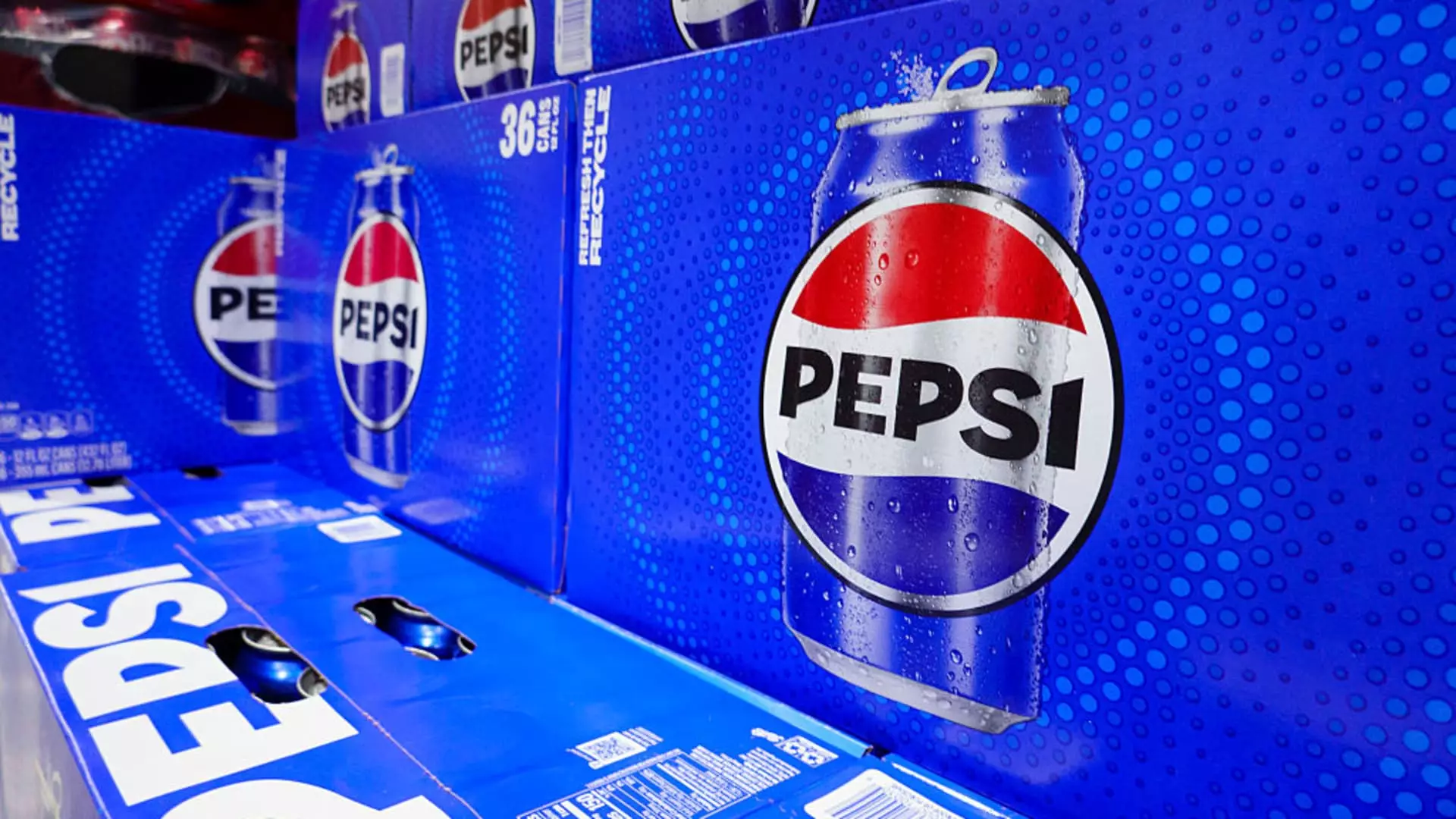PepsiCo’s recent quarterly report presents a paradoxical picture, revealing both optimistic gains and underlying vulnerabilities. While the company modestly exceeded analyst expectations with a revenue of $22.73 billion—up 1%—and an adjusted earnings per share of $2.12, these figures mask a concerning downward trend. The nearly 70% plunge in net income from last year’s $3.08 billion signals deeper operational issues. Despite strategic efforts to invigorate growth, actual demand remains tepid, especially in North America where volumes declined across divisions. The company’s ability to beat expectations appears more a product of cost-cutting measures and short-term efficiencies rather than authentic market expansion.
This discrepancy raises questions about how well Pepsi understands its consumer base. Relying on product relaunches and marketing reallocations to sustain growth may prove insufficient without addressing core consumer needs. The company’s fat margin improvements are commendable but ultimately insufficient if sales continue to falter. These financial results underscore the difficulty Pepsi faces in executing its strategic shift amid a shifting landscape of consumer preferences and fierce competition.
Strategic Shifts: Symptom of a Company in Transition
Pepsi’s leadership is quick to tout initiatives aimed at revitalizing its brand portfolio: embracing health-focused snacks, multicultural offerings, and a re-emphasis on core ingredients. The planned relaunch of beloved staples like Lay’s and Tostitos underscores a recognition that authenticity and simplicity resonate more than complex product diversification. Yet, these strategies reflect a reactive stance rather than a proactive overhaul. The company’s focus on healthier snacks and protein-driven options sidesteps the deeper challenge of declining soda consumption—a trend that is unlikely to reverse solely through product tweaks.
Moreover, cost-cutting measures, such as shuttering manufacturing plants and streamlining logistics, indicate a desperate attempt to shore up profitability rather than foster sustainable growth. These moves, while fiscally prudent in the short term, threaten to undermine Pepsi’s long-term brand equity and innovation capacity. The gamble that operational efficiencies can compensate for stagnant demand is a perilous one, especially when consumer loyalty is increasingly linked to authentic engagement and product relevance.
The Illusion of Market Improvement
Despite assertions that North American demand is “improving,” the data paints a different picture. Both food and beverage volumes in the region have contracted, with beverage volume falling by 2%. The company’s focus on expanding premium offerings like Pepsi Zero Sugar and multicultural products hints at a strategic pivot, but these are largely incremental gains in a consumer landscape that values authenticity and healthfulness over novelty.
The effort to improve in-store placement and marketing spend appears to be more about firefighting rather than creating a sustainable growth engine. Evaluating ad spend efficiency and reducing overlap between divisions are symptoms of a company trying to patch leaks in a sinking ship, rather than reimagining its core business model. These tactical adjustments may yield marginal short-term benefits but do little to address the fundamental challenge: declining relevance in a market that favors younger, health-conscious consumers who are increasingly turning away from traditional soda and snack brands.
Insufficient Innovation in a Rapidly Evolving Market
Pepsi’s cautious outlook for the remainder of the year exposes an industry in flux. Its projection of flat earnings and low single-digit organic growth reveals a company that is still grappling with its identity. While efforts to target protein-obsessed consumers and multicultural markets show strategic awareness, they still appear fragmented and reactive. Without genuine innovation—beyond superficial product line expansions—Pepsi risks becoming a legacy brand struggling for relevance.
Furthermore, the company’s focus on financial engineering—cost-cutting, plant closures, and logistical efficiencies—highlights a core weakness: an overreliance on austerity rather than reinvestment in product development. Meanwhile, competitors are investing heavily in healthier, more sustainable offerings and digital engagement. Pepsi’s conservative stance positions it precariously on the sidelines, watching its market share erode faster than it can catch up.
This reliance on short-term fixes and cost reductions is a warning sign. If Pepsi continues to underinvest in innovation and customer-centric strategies, it will find it increasingly difficult to maintain its place in a rapidly shifting consumer landscape. The company’s resilience depends not only on operational efficiency but also on its ability to read and lead market trends proactively, rather than reactively patching an increasingly frayed fabric.

